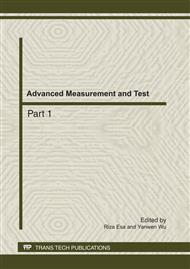p.1273
p.1278
p.1283
p.1289
p.1293
p.1299
p.1305
p.1310
p.1316
Real-Time GPS Clock Monitoring with IGS Ultra-Rapid Products
Abstract:
The objective of this study is to develop a real-time strategy that results in higher precision than any real-time solutions currently available for GPS satellite clock monitoring. A real-time time transfer methodology was employed for satellite clock monitoring, composed of carrier phase smoothed code measurements and IGS ultra-rapid products to obtain precise satellite positions. The performance of the time transfer method was assessed by comparison with the results based on the all-in-view method using the broadcasting ephemeredes. The results showed that the stability of satellite clock monitoring for a short-term period was improved by the proposed method.
Info:
Periodical:
Pages:
1293-1298
Citation:
Online since:
July 2011
Authors:
Price:
Сopyright:
© 2011 Trans Tech Publications Ltd. All Rights Reserved
Share:
Citation:


